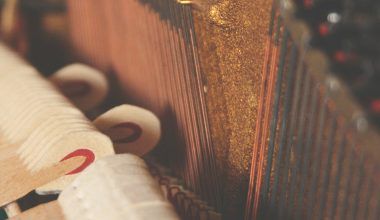Have you ever dreamed of recording your own music, podcasts, or voiceovers right from the comfort of your home? Building a home recording studio may sound like a daunting task, but it doesn’t have to be. With some planning, the right equipment, and a little creativity, you can create a professional-grade recording space without breaking the bank. Let’s walk through the steps together to make your home recording studio a reality.
Why Build a Home Recording Studio?
A home recording studio gives you the freedom to create whenever inspiration strikes. It also saves you the time and expense of renting studio space. Plus, with today’s technology, you can achieve high-quality results right at home. Whether you’re a musician, podcaster, or content creator, having your own studio means more control over your creative process. So, if you’re ready to unleash your inner artist, let’s dive in!
Choose the Right Space
The first step in setting up your home recording studio is finding the perfect spot. You don’t need a massive room, but you do need a space that’s quiet and free from distractions. A spare bedroom, basement, or even a large closet can work. When choosing your space, think about:
- Noise levels: Avoid areas with high traffic, barking dogs, or loud neighbors.
- Acoustics: Look for a room with minimal echo. Rooms with carpets and curtains tend to work better.
- Comfort: Make sure the space is somewhere you’ll enjoy spending hours creating.
Soundproofing Basics
Once you’ve chosen your space, it’s time to minimize outside noise. Soundproofing doesn’t have to be complicated or expensive. Start with these simple steps:
- Seal doors and windows: Use weatherstripping or draft stoppers to block sound leaks.
- Add rugs and curtains: These help absorb sound and reduce echo.
- Install acoustic panels: Foam panels or DIY options like heavy blankets can make a big difference.
The goal is to create a space where outside noise stays out, and your recordings sound clear.
Essential Equipment for Your Studio
Now that your space is ready, let’s talk gear. You don’t need to spend a fortune to get started. Here’s a list of essential equipment for a basic home recording studio:
1. Computer
Your computer is the heart of your studio. Whether you use a PC or Mac, make sure it’s powerful enough to handle recording software. Look for one with a fast processor and plenty of RAM.
2. Digital Audio Workstation (DAW)
A DAW is the software you’ll use to record, edit, and mix your audio. Popular options include:
- Audacity (free and beginner-friendly)
- GarageBand (for Mac users)
- Ableton Live
- Pro Tools
Choose a DAW that fits your budget and skill level.
3. Audio Interface
An audio interface connects your microphone and instruments to your computer. It improves sound quality and reduces latency. Look for one with at least two inputs and outputs to start.
4. Microphone
A good microphone is crucial for clear recordings. Condenser microphones are ideal for vocals, while dynamic microphones work well for instruments. If you’re just starting, consider the versatile Audio-Technica AT2020.
5. Headphones
Invest in a pair of studio-quality headphones for accurate sound monitoring. Closed-back headphones, like the Audio-Technica ATH-M50X, are a great choice.
6. Studio Monitors
Studio monitors are speakers designed for accurate audio playback. They help you hear your recordings as they truly sound. Popular beginner options include the KRK Rokit series or Yamaha HS5.
7. Cables and Accessories
Don’t forget the little things! You’ll need XLR cables for your microphone, stands, and pop filters to reduce plosive sounds.
Setting Up Your Studio
Once you have your equipment, it’s time to set up your space. Start by positioning your desk and computer in the center of the room. Place your studio monitors at ear level, forming an equilateral triangle with your listening position. This setup ensures the best sound quality.
Next, set up your microphone. Use a stand to keep it steady and attach a pop filter to improve vocal clarity. Finally, connect everything to your audio interface and computer. Test your setup to make sure everything works properly.
Optimizing Acoustics
Even with soundproofing, your room’s acoustics play a big role in recording quality. To optimize acoustics:
- Position your monitors and desk away from walls.
- Use bass traps in corners to reduce low-frequency buildup.
- Test your room by clapping and listening for echoes. Adjust as needed.
Learning the Basics of Recording
With your studio ready, it’s time to record! Start by familiarizing yourself with your DAW. Practice recording simple tracks and experiment with editing tools. Remember, learning takes time, so don’t get discouraged.
Tips for Great Recordings
Here are some tips to help you get professional-quality results:
- Warm up: Prepare your voice or instrument before recording.
- Check levels: Make sure your audio isn’t too loud or too soft.
- Use multiple takes: Record several versions and choose the best.
Staying Organized
A well-organized studio makes recording sessions smoother. Keep your cables tidy, label your files, and create a routine for setting up and breaking down your equipment.
Expanding Your Studio
As you gain experience, you may want to upgrade your gear. Consider adding a MIDI keyboard, additional microphones, or advanced plugins for your DAW. Expanding your studio is part of the fun, so take your time and invest as your skills grow.
Troubleshooting Common Issues
Every beginner faces challenges. Here are solutions to common problems:
- Background noise: Check for sound leaks and adjust your settings.
- Latency: Reduce latency by adjusting your buffer size in the DAW.
- Poor sound quality: Experiment with mic placement and acoustics.
Final Thoughts
Building a home recording studio is an exciting journey. It’s a space where you can bring your ideas to life and grow as a creator. By following these steps and staying patient, you’ll have a studio that meets your needs and fuels your creativity. So, what are you waiting for? Start building your dream studio today!
For further reading, explore these related articles:
- Exploring the Best Free Music Distribution App for Independent Artists
- Comprehensive Breakdown of Music Distribution Costs for Artists
For additional resources on music marketing and distribution, visit Deliver My Tune.






